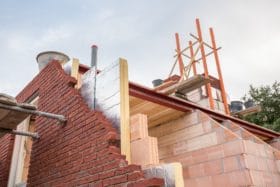
Learn from the experts with our online training course!
Use the code BUILD for 20% off
Learn from the experts with our online training course!
Use the code BUILD for 20% offThe past year has thrown self builders some dramatic curve balls – Biblical flooding, Brexit and Coronavirus to name but a few.
In Herefordshire, a county with a long and much admired legacy of self and custom build delivery, another troubling obstacle makes the list. Back in October 2019, a planning moratorium was issued overnight by Herefordshire Council, effectively putting a blanket ban on new homes.
It’s been implemented as the River Wye is contaminated with phosphates. A distant, unrelated legal ruling in Holland cast doubt over the validity of all existing Nutrient Plans in Europe… then along came our ban!
And no, Brexit won’t get us out of this one. Hampshire, Wiltshire and Portsmouth had similar nutrient concerns, falling foul of what’s now known as The Dutch Case. But they have quickly identified what needs to be done and jumped into action, so house building can continue alongside water quality improvements.
Eleven months on, Herefordshire is still pondering what to do – with over 1,100 homes in a backlog. Many applications are for self build schemes, including single plots and collective projects. It’s incredibly frustrating when demand for country plots and custom build is at an all-time high.
Learn more: How to Get Planners on Your Side
Shockingly, the moratorium is also preventing affordable housing and tourism growth – stifling the county’s economic recovery and social reform when it is most needed. Boris Johnson said we must “Build Better, Build Greener, Build Faster” and yet in much of Herefordshire it is impossible to build at all!
The Environment Agency says the contamination is a largely agricultural phosphate, possibly a by-product of the expanding industrial poultry sector in parts of Wales and Herefordshire washing fertiliser and manure into the streams and rivers. The other source is human waste that’s gone through sewage treatment works. Welsh Water has spent over £50m on improvements and phosphate strippers within the catchment and is funding further upgrades over the next 10 years.
A lobby group representing local construction businesses and self builders is looking to expedite solutions. Suggestions include site specific drainage, integrated wetlands and the rewilding of agricultural land to achieve nutrient neutrality.
Solutions are being thwarted by the lack of a Phosphate Calculator Tool for the county. This would enable applicants to assess how much phosphate is generated by a proposal and what mitigation is needed. Without the calculator (at the time of writing, Herefordshire Council hadn’t even tendered for quotes on this) it is almost impossible for applicants to show their project is ‘phosphate neutral’ and appease Natural England.
The council knows where the problem comes from, and appears to have the money to fix it (it’s agreed to allocate £2m from their government-provided New Homes Bonus piggy bank to rewilding schemes). But progress is painfully slow.
In the mean time, there’s no new plots and no water quality improvements. ‘Build, Build, Build!’ they say – if only we could.

